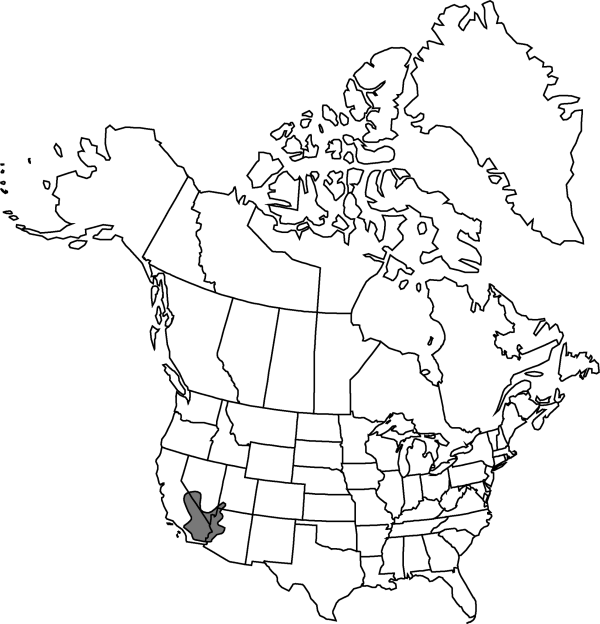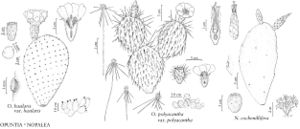Difference between revisions of "Opuntia basilaris var. basilaris"
Synonyms: Opuntia basilaris var. ramosa unknownOpuntia whitneyana unknown
FNA>Volume Importer |
FNA>Volume Importer |
||
| Line 18: | Line 18: | ||
}}<!-- | }}<!-- | ||
| − | --><span class="statement" id="st- | + | --><span class="statement" id="st-undefined" data-properties=""><b>Stem </b>segments erect, flattened, obovate, 7–22(–35) × 6.5–13.5(–16) cm; areoles (8–)10–16(–19) per diagonal row across midstem segment, circular. <b>Spines</b> absent or very rarely 1–few very short spines per stem segment. <b>Fruits</b> spineless. <b>2n</b> = 22.</span><!-- |
-->{{Treatment/Body | -->{{Treatment/Body | ||
| + | |phenology=Flowering late winter–spring (Feb–Jun). | ||
|habitat=Chaparral, woodlands, desert flats, hills, sandy to rocky soils | |habitat=Chaparral, woodlands, desert flats, hills, sandy to rocky soils | ||
|elevation=300-1700 m | |elevation=300-1700 m | ||
| Line 39: | Line 40: | ||
|basionyms= | |basionyms= | ||
|family=Cactaceae | |family=Cactaceae | ||
| + | |phenology=Flowering late winter–spring (Feb–Jun). | ||
|habitat=Chaparral, woodlands, desert flats, hills, sandy to rocky soils | |habitat=Chaparral, woodlands, desert flats, hills, sandy to rocky soils | ||
|elevation=300-1700 m | |elevation=300-1700 m | ||
| Line 46: | Line 48: | ||
|publication year= | |publication year= | ||
|special status= | |special status= | ||
| − | |source xml=https://jpend@bitbucket.org/aafc-mbb/fna- | + | |source xml=https://jpend@bitbucket.org/aafc-mbb/fna-data-curation.git/src/9216fc802291cd3df363fd52122300479582ede7/coarse_grained_fna_xml/V4/V4_275.xml |
|subfamily=Cactaceae subfam. Opuntioideae | |subfamily=Cactaceae subfam. Opuntioideae | ||
|genus=Opuntia | |genus=Opuntia | ||
|species=Opuntia basilaris | |species=Opuntia basilaris | ||
|variety=Opuntia basilaris var. basilaris | |variety=Opuntia basilaris var. basilaris | ||
| − | |||
| − | |||
| − | |||
| − | |||
| − | |||
| − | |||
| − | |||
| − | |||
| − | |||
| − | |||
| − | |||
| − | |||
| − | |||
}}<!-- | }}<!-- | ||
-->[[Category:Treatment]][[Category:Opuntia basilaris]] | -->[[Category:Treatment]][[Category:Opuntia basilaris]] | ||
Revision as of 15:03, 27 July 2019
Stem segments erect, flattened, obovate, 7–22(–35) × 6.5–13.5(–16) cm; areoles (8–)10–16(–19) per diagonal row across midstem segment, circular. Spines absent or very rarely 1–few very short spines per stem segment. Fruits spineless. 2n = 22.
Phenology: Flowering late winter–spring (Feb–Jun).
Habitat: Chaparral, woodlands, desert flats, hills, sandy to rocky soils
Elevation: 300-1700 m
Distribution

Ariz., Calif., Nev., Utah, n Mexico.
Discussion
Selected References
None.
Lower Taxa
None.
